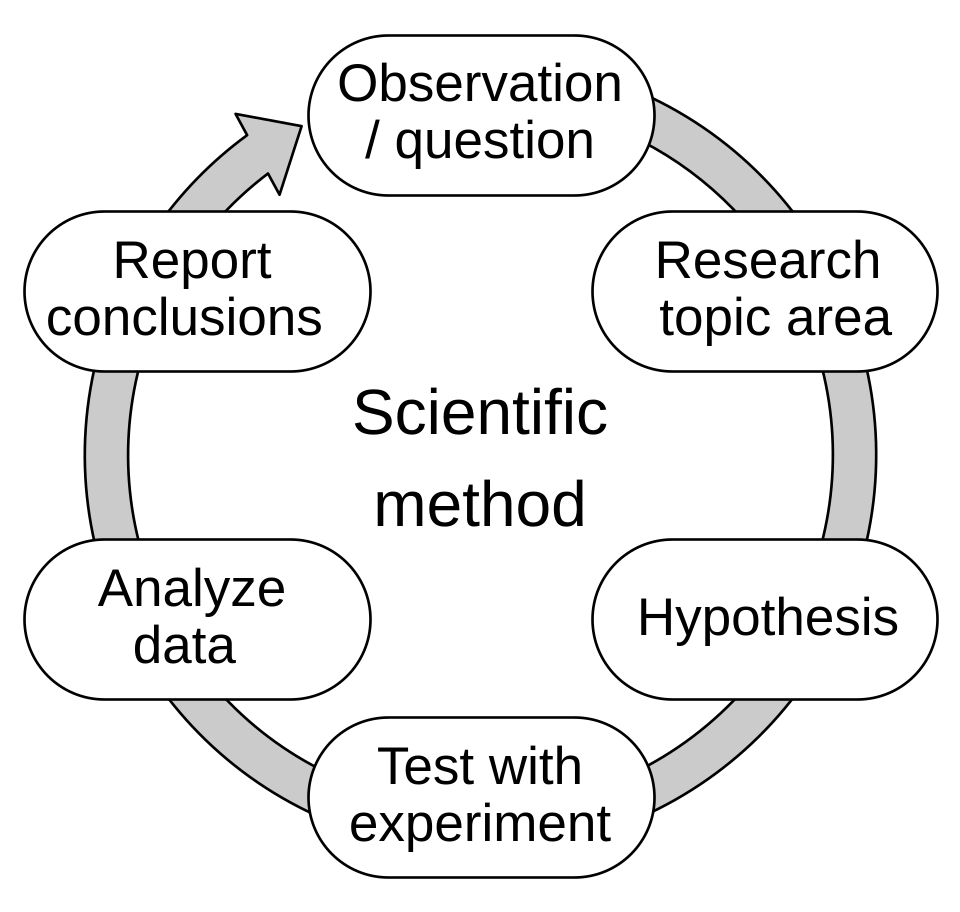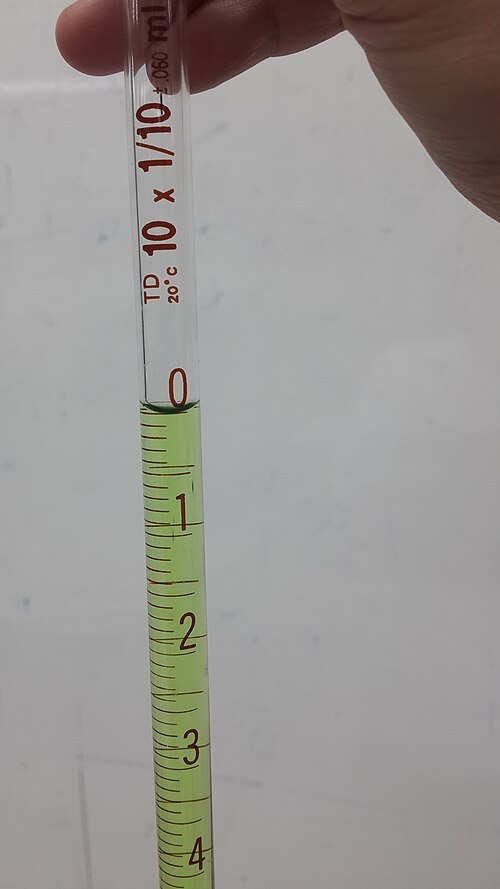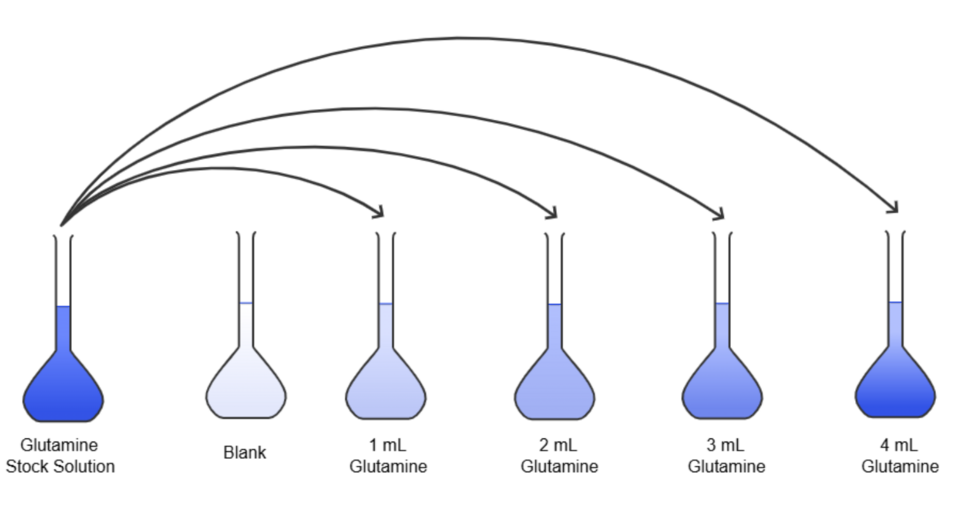OCR Specification focus:
‘Devise a workable, stepwise method that is appropriate to meet the expected outcomes of the investigation.’
Practical methods must be written clearly and logically so experiments can be repeated successfully, generating reliable results that support or refute predictions linked to scientific understanding.
Writing Practical Methods
A practical method must allow another person to follow the investigation without improvisation. A well-structured method ensures repeatability, clarity, and a direct link to the aim of the experiment. It should be written as a sequence of numbered steps, using concise language and measurable actions.

Flowchart of the scientific method, illustrating the logical progression from hypothesis and prediction through experimental testing. This supports the need for stepwise, repeatable method design. Source.
A method must be feasible with available school or laboratory equipment and follow standard biological procedures.
Predicted Outcomes
Predicted outcomes are written statements of what you expect to observe or measure during the experiment, based on scientific principles. They must be testable and clearly related to the independent and dependent variables, as well as the aim.
Linking Methods to Aims
A method must always support a clearly defined aim. This avoids irrelevant procedures and ensures that all steps contribute to answering the biological question. A prediction should state the expected directional change, normally using comparative language such as increase, decrease, or no significant difference, depending on the hypothesis.
Essential Features of a Workable Method
A high-quality method should:
Follow a logical order from preparation to data collection
Specify apparatus, materials, and volumes or quantities
Identify how variables will be controlled
Include precise timings, temperatures, and measurement techniques
State how data will be recorded
Reference safety precautions and correct handling of equipment
Independent, Dependent and Control Variables
The method must support consistent control of variables. An independent variable is the factor that is purposely changed, while a dependent variable is the factor measured to assess the outcome.
Control Variable: A factor that is kept constant to ensure that only the independent variable influences the dependent variable.
A method must explain how each control variable will be maintained, such as using thermostatically controlled water baths to regulate temperature or measuring volumes with a pipette for precision.

Photograph showing the correct reading of a concave meniscus at eye level. This supports writing accurate, repeatable liquid measurement steps in a practical method. Source.
Writing in Measurable and Reproducible Terms
Instructions should avoid vague wording like “a small amount” or “heat for a while.” Instead, students should:
State numerical values, e.g. 10 cm³, 2 minutes, 35°C
Use standard biological techniques such as serial dilution, colorimetry, or microscopy

Diagram of a standard serial dilution, supporting the need for clear, numbered, volume-specific procedural steps in written methods. Source.
Write measurements using the correct SI units
Safety and Ethical Considerations
Methods must acknowledge relevant safety measures. For example:
Wear eye protection when heating substances
Disinfect benches and wash hands after handling microorganisms
Dispose of biological waste appropriately
Ethical considerations may apply when working with biological material, especially living organisms.
Stepwise Method Design
A clear method uses numbered steps so the sequence is unambiguous. Steps should be written in chronological order and include the following structure:
Preparation of equipment and reagents
Setup of experimental apparatus
Execution of the procedure with controlled variables
Method of collecting qualitative or quantitative data
Final steps such as cleaning equipment or turning off apparatus
The method should also state how many repeats will be carried out to improve reliability.
Recording Expected Observations
Predicted outcomes must be written alongside the method or immediately after it. These predictions should refer to the biological process being investigated, such as enzyme activity, membrane permeability, or diffusion rate. A valid prediction explains the expected trend and relates it to underlying theory. For example, in enzyme studies, predictions must reference active sites, kinetic energy, or temperature effects where appropriate.
Hypotheses and Predicted Trends
A hypothesis is a testable statement that proposes a relationship between variables.
Hypothesis: A statement predicting how the independent variable will affect the dependent variable, based on established scientific reasoning.
After introducing a hypothesis, a predicted outcome should describe the measurable trend that the data will likely show if the hypothesis is correct.
Clarity, Precision and Scientific Justification
Predicted outcomes should not be guesses. They must be rooted in relevant biological knowledge and written using definitive scientific language. The prediction should match the data the method is designed to collect, whether qualitative observations, colour changes, numerical measurements, or calculated rates. Consistency between aim, hypothesis, method, and prediction strengthens the overall quality of the investigation.
FAQ
A step is repeatable when another person can carry it out with no guesswork or assumptions. Each step must state exactly what to do, how to do it, and with what equipment.
For clarity, a good step specifies:
A measurable action (e.g., measure, place, record)
The equipment used
A precise value, unit, and time
If two trained students would complete the step in the same way, the level of detail is sufficient.
A hypothesis is a testable statement proposing a relationship between the independent and dependent variables, based on biological theory.
A predicted outcome is more specific and focuses on the expected trend in the results. It explains what should happen in measurable terms, referring to the data that will be collected rather than the concept alone.
Control variables are only essential if they could influence the dependent variable.
To decide, ask:
Could this factor change the result?
Could it vary during the investigation?
Can it be controlled in the school laboratory?
If yes to all three, it must be written into the method. State both the variable and how it will be kept constant.
Minimise human error by choosing consistent, measurable techniques rather than adding more steps.
Common strategies include:
Using rulers, thermostatic equipment, or digital timers instead of estimating
Taking repeated measurements
Keeping the observer, angle, or measurement position constant
Focus on clarity and precision instead of length.
Planning the recording format in advance ensures data collection is systematic and complete. It prevents missing measurements and keeps all repeats and variables aligned.
It also:
Helps decide whether raw data will be qualitative or quantitative
Ensures measurements are taken at consistent intervals
Supports easier processing later, such as calculating means or plotting graphs
Practice Questions
Question 1 (2 marks)
A student writes the following step in a method:
“Heat the solution for a while and then add a small amount of enzyme.”
Suggest two improvements to make this step more suitable for a practical method.
Question 1 (2 marks)
Award 1 mark for each improvement, up to 2 marks.
Possible points:
Specify a precise temperature or temperature range (e.g. 35 degrees Celsius) (1)
State an exact time period instead of “for a while” (1)
Replace “a small amount” with a measured volume or mass (e.g. 5 cm3) (1)
Use appropriate scientific terminology, such as “incubate” instead of “heat” (1)
Question 2 (5 marks)
A student plans an investigation to determine how light intensity affects the rate of photosynthesis in pondweed. They write a hypothesis and predicted outcome but their method is vague and lacks detail.
Describe what the student should include in a clear, step-by-step practical method, and explain how the method should link to the hypothesis and predicted outcome.
Question 2 (5 marks)
Award marks for the following, up to 5 marks:
Method written as a logical sequence of numbered steps (1)
Inclusion of specific, measurable details such as volumes, timings, or distances from the light source (1)
Identification and control of key variables, for example temperature or carbon dioxide concentration (1)
Clear method of collecting data, such as counting bubbles per minute or measuring oxygen volume (1)
Explicit link between the method, hypothesis, and predicted trend (e.g. increased light intensity leads to increased photosynthesis up to a point) (1)

